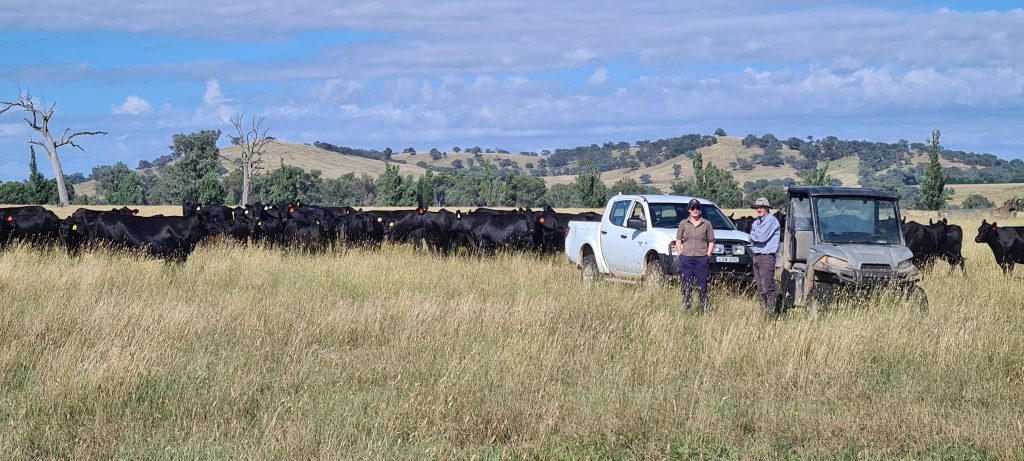Holbrook Sustainability Benchmarking Pilot
Background
Back in 2020, Holbrook Landcare Network recognized that the model that has traditionally underpinned Landcare and environmental work on farm was changing – shifting from a funded grants and programs approach to a range of market-based approaches mostly based on carbon markets. We are now beginning to see the agricultural industry responding to ESG requirements in supply chains, funding institutions and markets and the rise of a myriad of mechanisms, methodologies and service providers. It would be safe to say there has been an explosion in this space in the last 3 years! The Carbon space is well established but we are seeing the biodiversity and natural capital space expand rapidly.
Landcare Australia’s Landcare Farming program provided an opportunity to explore this area, get some staff training on Carbon assessment and Accounting for Nature Landcare assessment and explore this space.
What does it mean for Landcare?
For Landcare, the funding model is changing and we are needing to decide what our role will be. HLN at the moment has defined this as:
- Being a provider of objective information on the topic
- Identifying and acting on the research needs, demos and trials that are needed to get producers on the path to CN30 (and other industry and government environmental targets)
- Helping to improve the adoptability of technology and innovations as well as emerging accreditation systems that contribute to CN30 and other industry and government environmental targets.
- Awareness raising, extension and facilitating ‘first step’ assessments for producers
What does it mean for Producers?
Many of our producers benchmark their livestock performance and businesses already – introducing environmental benchmarking seemed a good fit. After investigating several possible methodologies with our core group of producers, it was decided that what farmers actually need is a first step rapid assessment ‘assets’ analysis to:
- Improve their environmental literacy and to understand what’s been asked of them
- Identifying basic natural capital assets to protect or improve – vegetation, habitat, significant species, waterways, wetlands, natural resource management practices and understand the potential opportunity
The producers identified these things were important:
- Need to understand natural assets in terms of the management units they work with – paddock scale assessment
- Someone (Landcare!) needs to help do it – self assessment is just not an option due to time and knowledge constraints
What did we learn?
- Probably no such thing as rapid assessment! It is easy to get caught up in the complexity and overthinking it – the information that needs to be collated and reported really depends on what the individual farming business is doing it for, and what programs or markets they might be interested in
- There are SO MANY different tools and methodologies emerging and it’s a very confusing space and easy to get “analysis paralysis”
- The markets for natural capital are only just emerging – it’s a very young industry and the rewards are not there yet. This makes it hard to explain why producers should benchmark at the moment, let alone decide what methodology to use to do it. The looming compulsory ESG reporting for medium businesses is likely to cause supply chains to determine the minimum requirements for farmers as they are being asked to report. Until that happens, its difficult to know what to include.
- Methane emissions reduction is the producers biggest challenge – need to look for the wins in reducing emissions from energy, fuel and inputs on-farm (scope 1 & 2), and being the most efficient you can be. Not one of the 10 producers we worked with were Net Zero, and for most there weren’t many options for getting there without significant landuse change.
Where to now?
- Holbrook Landcare can help you with your baseline carbon assessment using the GAF tools or the MLA tool if you are a member
- Holbrook Landcare can help you get some basics – what environmental assets have you got? How might they be potential opportunities in upcoming markets
- We are continuing to work with a variety of partners to develop and trial various natural capital accounting methods (e.g. Accounting for Nature, Farming for the Future, MLA Enviro credentials program).
- We need to help identify the management pathways to achieve improvement associated with those assets and get real improvement in the measures – that’s what we are exploring next and where Landcare has the track record.
- Exploring how to upscale to a regional assessment and accounting which would provide farmers with locally relevant goals for their own farms and for organizations like ours, the ability to measure our impact across the region.
Got your Carbon number? What next?
W have a bit of an explainer here:
https://holbrooklandcare.org.au/wp-content/uploads/2023/07/Carbon-Infographic.pdf

